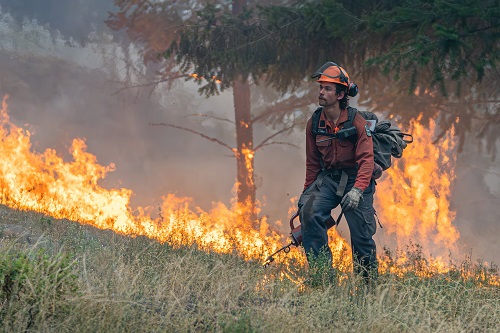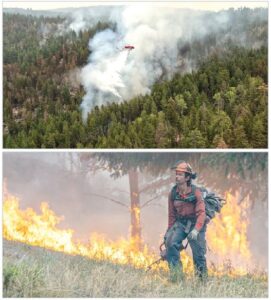Increased wildfire activity in northern B.C. amid heat wave
TORONTO – While there are still 395 active wildfires in British Columbia, including 12 that pose a threat to public safety, large portions of the province continue to “smother” due to high temperatures. Environment Canada says temperatures will again push near or above 30° C in parts of the Peace River Regional District and Northern Rockies Regional Municipality.
Today temperature “peaks” were recorded (as indeed had been anticipated) in Fort St. John, Dawson Creek and Fort Nelson: the latter location recorded a good 33.9°C. The Wildfire Service (BCWS) therefore warns that the hot and dry conditions in these areas of the province lead to an increase in fire activity: the Fort Nelson First Nation has therefore put two reserves on alert.
Meanwhile, crews battling the destructive wildfire in the Shuswap region are hoping for help as rain could start falling before dawn this morning. Mike McCulley, BCWS information officer, says it’s unclear how much rain could help their efforts. Additionally, temperatures in Salmon Arm and Kelowna surpassed 30C on Tuesday with no precipitation reported. The alarm remains high for inhabited areas: the Central Okanagan Emergency Operation Center states that, according to the latest data collected, 189 structures were burned by the McDougall Creek fire. An additional 8,000 properties continue to be under evacuation orders due to wildfires, while 54,000 are on evacuation alert.
British Columbia Shuswap officials began alerting residents of properties affected by the Bush Creek East fire on Monday. People in the north-west of the province are once again watching the fires closely as the village of Witset has issued an evacuation notice.
Then there’s the “collateral” issue of wildfire smoke: air quality advisories from wildfire smoke remain in place for British Columbia’s south coast and southern interior, along with a severe storm warning for Vancouver Island.
Finally, there’s the cost of relief and firefighting: British Columbia’s Wildfire Service says it has spent about $585 million on wildfire suppression efforts since April 1.
In the images above, two interventions on the fires in British Columbia, in the Kelowna area (from Twitter – @BCGovFireInfo)




